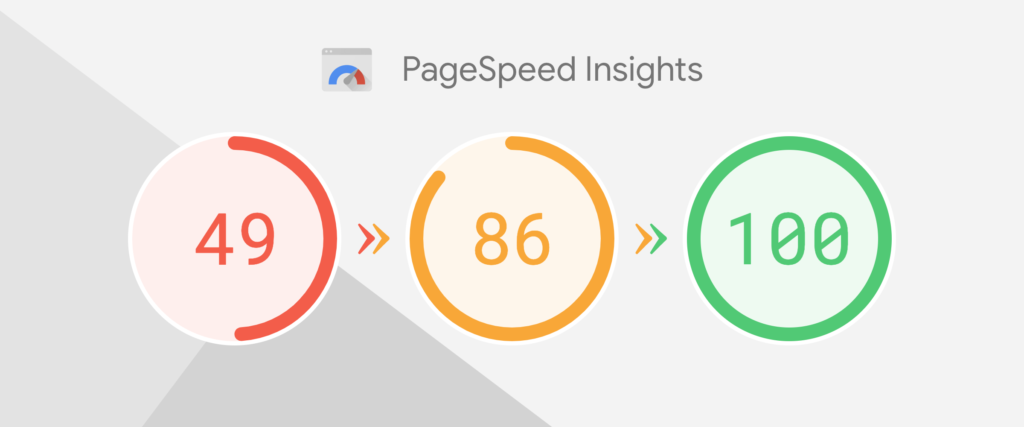The Google Algorithm is evolving to produce better search results and UX. This includes complex updates that balance quality content with changing user behaviour and technology. Knowing ranking factors is essential for SEO success, as they directly affect a website’s performance in search engine result pages.
This optimization helps increase visibility and drive conversions. This guide will examine Google’s 11 Most Important Search Ranking Factors, explaining why websites must provide relevant information and why Google ranking factors matter. Let’s dive in.
1. High-Quality, Relevant Content
Content will continue to be one of the cornerstones of SEO. Google has always favoured high-quality, relevant content that offers value to users. The search engine’s algorithms are constructed to encourage sites that provide depth and relevance.

Here are content optimization tips that you need to follow:
a. Focus on User Intent
Learn about the various sorts of user intent: informational, navigational, and transactional. Ensure your content is written to fit these intents to ensure it speaks to the underlying demands of your audience.
b. Use comprehensive, Well-researched Content
You can rank better in the searches by submitting an extensive report of any topic at hand. Read long-form comprehensive articles that cover a subject heavily. Your content should be backed by substantial research, quality references, and correct details for the content to have authority and credibility.
c. Leverage the Helpful Content Update Guidelines
Get familiar with what Google defines as corrosive content guidelines 2025. Focus on creating content that is genuinely helpful and informative for users. Content created for ranking in search engines, not producing content which adds value or enriches the user experience.
2. Backlinks (Quality Over Quantity)
Backlinks are one of the most important search ranking factors in SEO as they endorse other websites. Understanding the difference between Dofollow and nofollow links is essential for effective link-building strategies. Do follow links pass on link juice, helping to improve a website’s authority and search engine ranking.
No-follow links don’t pass this authority, meaning they don’t directly contribute to SEO ranking. However, they can still drive traffic and create brand awareness. If nofollow links don’t pass the authority, then why do some backlinks have the nofollow attribute? This attribute can prevent authority from passing to the linked page for reasons such as paid promotions or user-generated content that the site owner doesn’t want to endorse. Acquiring high-quality and authoritative backlinks signals trust and credibility to search engines.

Pro tips for Link Building
a. Earn Links from High-Domain Authority Sites
Acquire backlinks from trustworthy sites in your niche. These links matter more and, therefore, have a more significant impact on your SEO. Guest posting, collaboration, or shareable content that generates links on authoritative sites are all possible strategies.
b. Avoid Spammy Building Tactics
Avoid practices such as link farms, paying for links, or creating excessive link exchanges, as you risk incurring penalties from Google. Instead, develop organic link-building practices that nurture real connections and relationships in your niche.
c. Use Tools like Ahrefs or SEMrush to Audit your Backlink Profile
Tools such as Ahrefs or SEMrush allow you to check your backlinks and analyze what other sites link to yours. Always get relevant backlinks and seek opportunities to disavow low-quality links that harm your site’s credibility.
3. Mobile First Indexing
Google started using the mobile version of a website for indexing and ranking. This change is releasing an increasing number of users who can reach the web using a mobile device. After all, mobile optimization does not only matter for SEO; it matters for staying visible and offering a great experience.

Mobile Optimization Essentials
a. Implement Responsive Design
Use a responsive web design that allows your site to adjust to various screen sizes and orientations automatically. Thus offering an uninterrupted experience between devices and enhancing usability and engagement.
b. Test Mobile Usability in Google Search Console
Keep an eye on your site’s mobile usability in Google Search Console. This tool allows you to see issues affecting your mobile performance to fix problems from impacting your rankings.
c. Simplify Navigation for Touchscreens
Optimize your site’s navigation for touch interactions. The buttons on the clear menu help the user navigate your site easily in case of mobile. Simple navigation helps users find what they need, giving quick service and making people want to stick around longer.
4. Website Page Speed & Core Web Vitals
Page speed is essential for user experience and SEO. Slow loading pages can lead to higher bounce rates and lower user satisfaction, which affects your site’s rankings in a bad way. Core Web Vitals, which reflect key elements of user experience, are one of the considerations a ranking factor of page speed. If you are not getting the right issue while considering the core web vital, you definitely need a bit of expert advice, and for this, you can contact Links Forge to get help in optimizing your site’s core web vitals.

Speed-Boosting Tactics
a. Optimize LCP, FID and CLS Scores
- Go for an LCP of 2.5 seconds or less to ensure content loads quickly.
- Strive for an FID of less than 100 milliseconds to provide a responsive experience.
- Keep your CLS score below 0.1 to prevent unexpected layout shifts that can frustrate users.
b. Use Page Speed Insights to Diagnose Issues
Use Google’s PageSpeed insights tool to analyze your site’s performance. This tool provides detailed insights and actionable recommendations for improving speed and user experience.
c. Compress Images and Minimize Render-Blocking Code
Optimize images by compressing them and using appropriate formats. This reduces load times without sacrificing quality. Minimize render-blocking resources such as CSS and JavaScript by deferring loading or using asynchronous loading techniques.
5. User Experience (UX)
User Experience is essential in SEO because Google counts dwell time and bounce rate, among other engagement metrics. A good UX encourages users to spend more time on your site and engage with your content, which can improve your rankings. An underwhelming UX can lead to high bounce rates and low user engagement, ultimately hurting your site’s standing in search results.

UX Enhancement Strategies
a. Streamline Site Navigation and Readability
Make sure the navigation on your website is intuitive and user-friendly. An organized menu allows users to access information in your application quickly, thus improving the overall application experience. Keep it structured with bullet points, including headings and subheadings. This helps users skim content and get what they want.
b. Use Visuals and Whitespace Strategically
Use images, infographics, and videos to add interest and break up text. Images can convey quite complicated concepts and keep users engaged. 2. Use whitespace wisely. Not having enough space between different elements can lead to cognitive overload, so giving enough space to elements can help improve users’ focus.
c. Ensure Accessibility Compliance
It’s essential to know how many users can access your website, including users with disabilities. Add alt-text to the images so screen readers can read what the images are about. Add Keyboard Navigation — Users who cannot use a mouse can also use the keyboard to navigate your site, thus improving usability for people with mobility impairments.
6. E-E-A-T (Experience, Expertise, Authoritativeness, Trustworthiness)
E-E-A-T is important for YMYL (Your Money or Your Life) sites where the content can significantly impact users’ health, finances, or safety. Google emphasizes the importance of demonstrating experience, expertise, authoritativeness and trustworthiness to ensure users receive reliable and accurate information.

Building Trust & Authority
a. Highlight Author Expertise with Bios and Credentials
Provide author bios that describe their qualifications and experience relevant to the content they create. Doing so builds credibility and gives users peace of mind that they learn from knowledgeable sources.
b. Cite Reputable Sources and Secure User Data
Cite credible sources in your content to support claims and provide context. Adding to the author’s wealth of information makes your content more authoritative and trusted by your audience. User data must be handled securely and transparently, which is especially important for YMYL sites in building and maintaining trust.
c. Showcase Customer Testimonials and Reviews
Display testimonials and reviews from satisfied customers to provide social proof. Positive feedback can enhance your site’s trustworthiness and encourage new users to engage with your content or services.
7. Secure & Accessible Website (HTTPS)
HTTPS is a fundamental ranking signal for Google. It ensures that data transmitted between a user’s browser and your website is encrypted, providing a secure browsing experience. Websites using HTTPS are more trusted by users and search engines, which can positively impact your rankings.

Security Best Practices
a. Migrate to HTTPS and Fix Mixed Content Errors
If your site still uses HTTP, migrate to HTTPS by obtaining an SSL certificate. This transition is essential for securing user data and improving your site’s credibility. After migration, check for mixed content errors where some resources are still loaded over HTTP. Fix these errors to ensure that all content is served securely.
b. Regularly Update SSL Certificates
SSL certificates have expiration dates and need to be renewed periodically. Update your SSL certificate regularly to maintain a secure connection and avoid warnings that can deter users.
c. Use HSTS Headers for Added Protection
Implement HTTP Strict Transport Security (HSTS) headers to enforce HTTPS across your site. It tells browsers to only communicate with your site over HTTPS, enhancing security against certain types of attacks, such as man-in-the-middle attacks.
8. Keyword Optimization
Google’s Natural Language Processing (NLP) capabilities evaluate the context and user intent behind search queries. Understanding and matching keyword relevance to user intent is essential for optimizing content effectively. This approach helps ensure that your content meets users’ specific needs.

Keyword Search Tactics
a. Target Long-Tail Keywords and Semantic Variations
Focus on long-tail words, which are more specific and often indicate more evident user intent. These keywords have lower competition and can drive more qualified traffic to your site. Incorporate semantic variations of your main keywords to capture a broader range of related searches. This helps Google understand your content’s context better.
b. Align Content with Search Stage
Create content that corresponds to different stages of the buyer’s journey. Provide informative content that addresses general questions and problems. Offer comparisons, detailed guides and case studies to help users evaluate options. Focus on persuasive content, such as product pages and testimonials to encourage conversions.
c. Use Tools Like SurferSEO for TF-IDF Analysis
Utilize tools such as SurferSEO to conduct TF-IDF analysis. This helps identify essential keywords and phrases that competitors use, enabling you to optimize your content for better relevance and authority.
9. Website Structure & Schema Mark-up
Structured data and schema mark-up enhance search visibility through rich snippets. These snippets provide additional information about your content in search results, improving click-through rates and user engagement.

Schema Implementation Guide
a. Mark Up Articles, FAQs, Products and Events
Use Schema mark-up to structure different types of content such as:
- Enhance news articles or blog posts with relevant schema to display headlines, authors and publication dates.
- Implement FAQ schema to allow questions and answers to appear directly in search results, improving user experience and engagement.
- Use product schema to display pricing, availability, and reviews directly in SERPs, enticing potential buyers. Links Forge Company can help you implement the schema.
- Mark up events with schema to provide details like date, location, and ticket information, helping users find relevant events easily.
b. Validate Markup with Google’s Structured Data Testing Tool
After implementing schema markup, use Google’s structured Data testing tool to validate your markup. This tool checks for errors and ensures that your structured data is correctly formatted, helping to avoid issues that could prevent rich snippets from appearing.
10. Optimized Video Content

Google Favors up-to-date information especially for topics where freshness is essential. Regularly updating your content helps improve rankings, keep users engaged and maintain relevance in search results. Conduct regular audits of your existing content to identify outdated posts. Include timestamps in your content. This signals to users and search engines that the content has been revised and enhancing trust or encouraging clicks.
11. Domain Authority & On-Page SEO
A strong domain authority helps websites rank higher over time. Building authority through effective on-page SEO practices can improve your site’s visibility and credibility in search results. Optimize title tags, headers and Meta descriptions. Fix broken links and strengthen internal linking.
